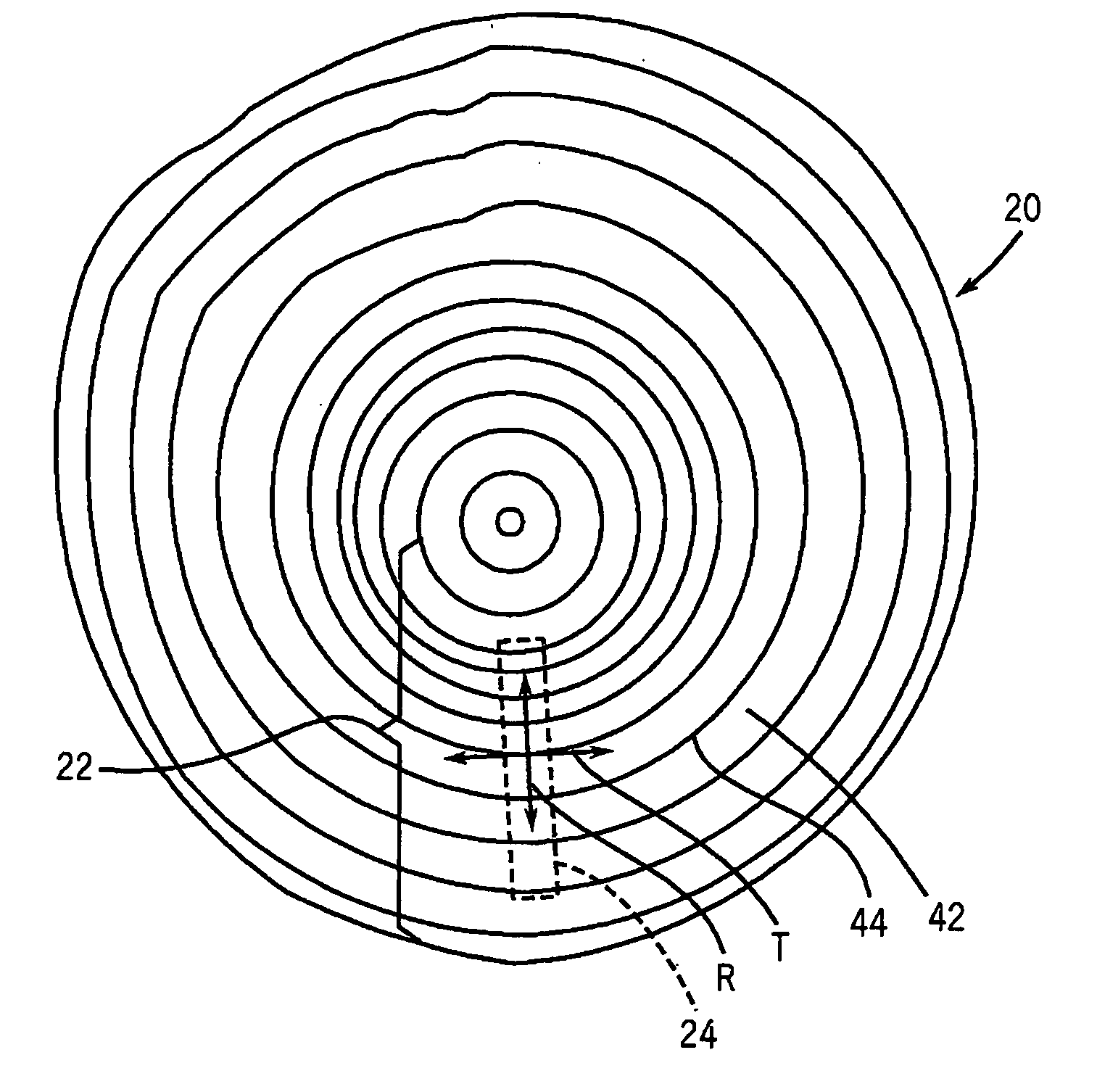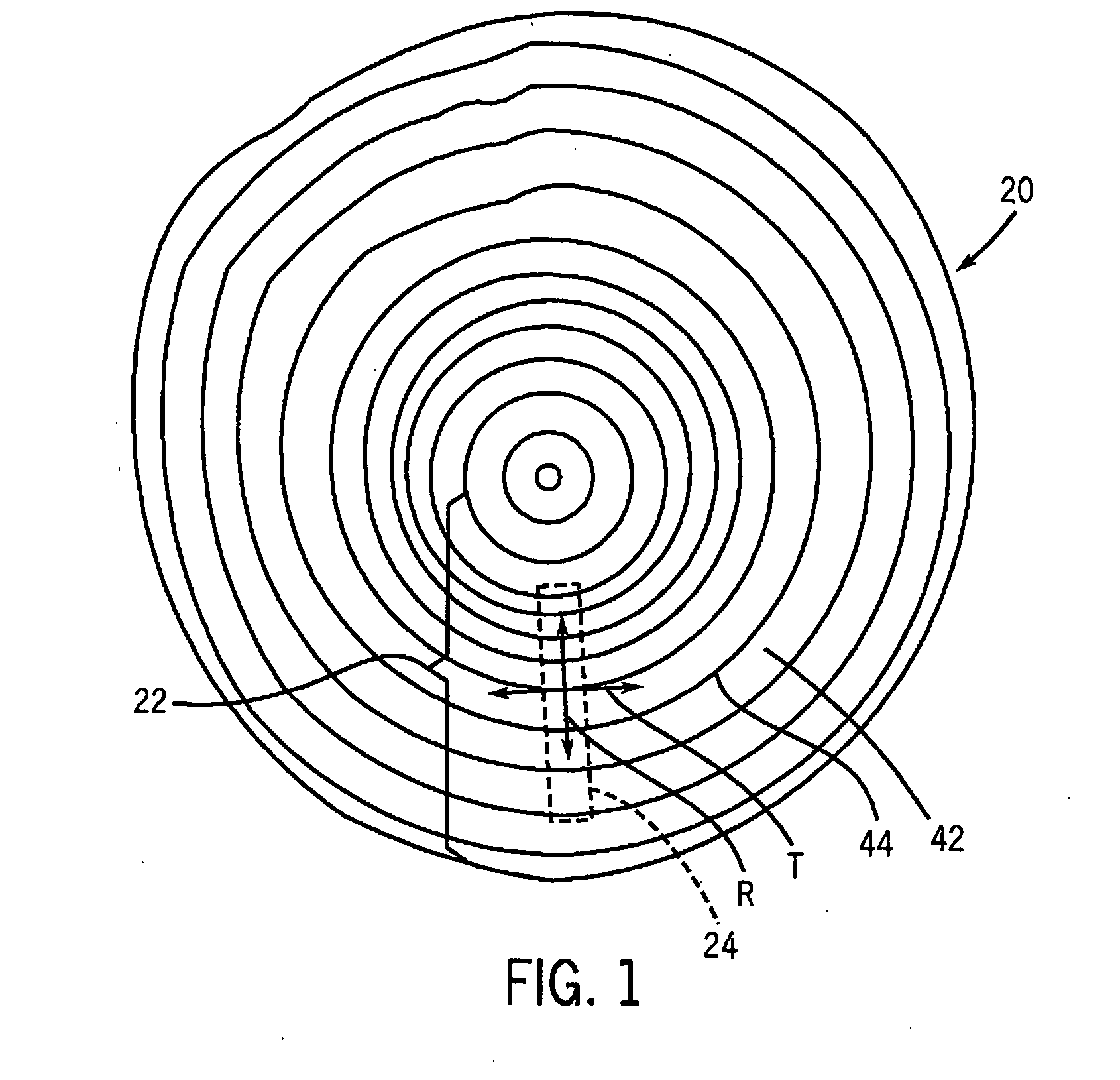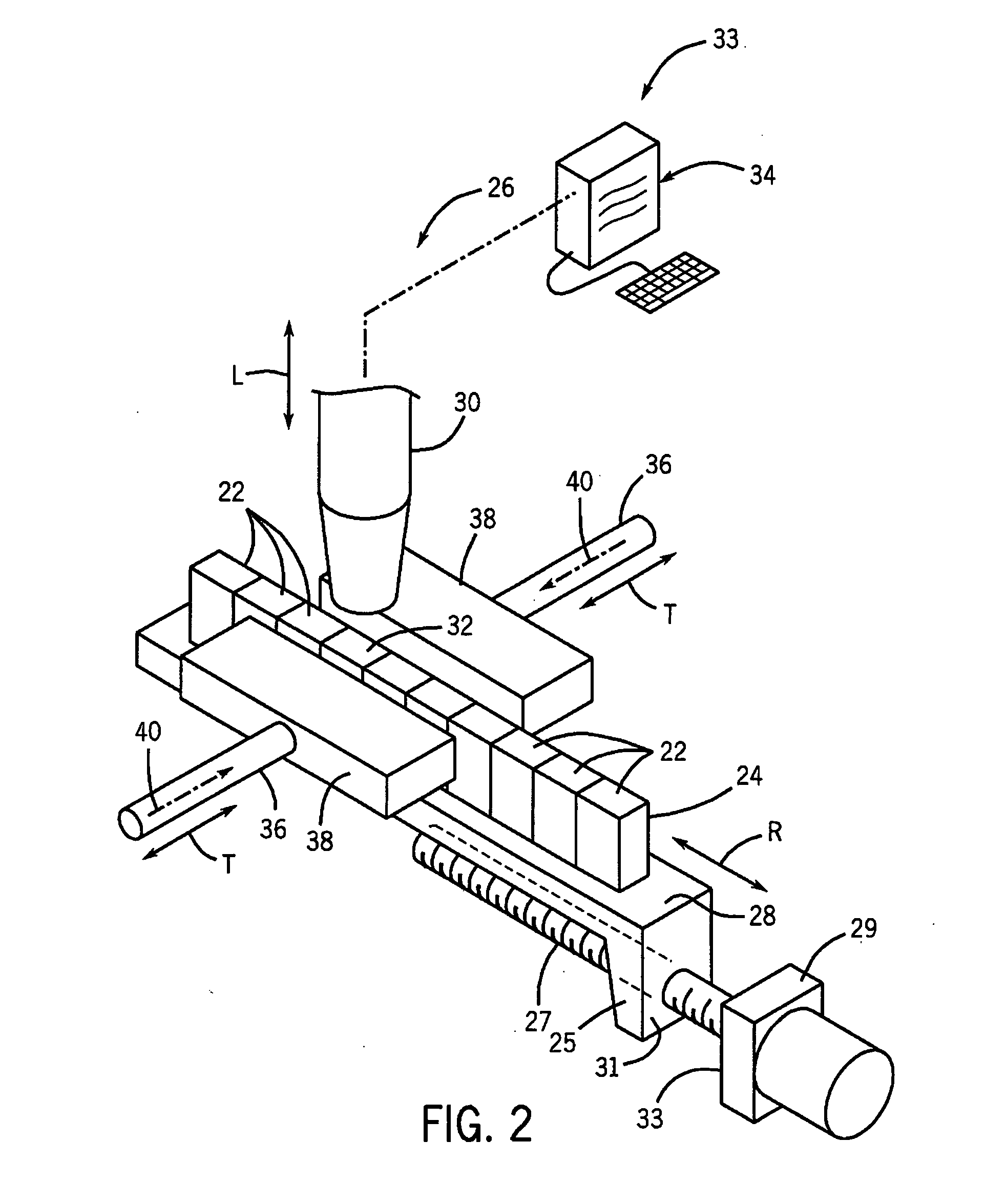Method for characterizing the density and cross-section morphology of trees
a cross-sectional morphology and density technology, applied in the field of measuring the anatomical properties of trees, can solve the problems of inconvenient use of fiber of small-diameter trees by pulp and paper industry, lack of proper understanding of differences and whether, and damage to wood
- Summary
- Abstract
- Description
- Claims
- Application Information
AI Technical Summary
Benefits of technology
Problems solved by technology
Method used
Image
Examples
example
[0033]The sample 24 was imaged with an imaging system having a substantially rectangular field of view of approximately 300 μm in the radial direction R and approximately 233 μm in the tangential direction T, thereby providing a pixel resolution of approximately 0.6 μm. One skilled in the art will appreciate, of course, that the pixel resolution could change depending upon how many pixels are provided within the field of view. It should be appreciated that the size and shape of the sample 24 and the field of view could change without departing from the scope and spirit of the present invention. For instance, increased resolution for improved wall-thickness measurement involves using a field of view that can be less than the entire thickness of the annular ring 22.
[0034]It should be appreciated from the description below that high resolutions decrease the likelihood that an image will include both earlywood and latewood portions of a ring 22, except possibly in the case of suppressed...
PUM
 Login to View More
Login to View More Abstract
Description
Claims
Application Information
 Login to View More
Login to View More - R&D
- Intellectual Property
- Life Sciences
- Materials
- Tech Scout
- Unparalleled Data Quality
- Higher Quality Content
- 60% Fewer Hallucinations
Browse by: Latest US Patents, China's latest patents, Technical Efficacy Thesaurus, Application Domain, Technology Topic, Popular Technical Reports.
© 2025 PatSnap. All rights reserved.Legal|Privacy policy|Modern Slavery Act Transparency Statement|Sitemap|About US| Contact US: help@patsnap.com



